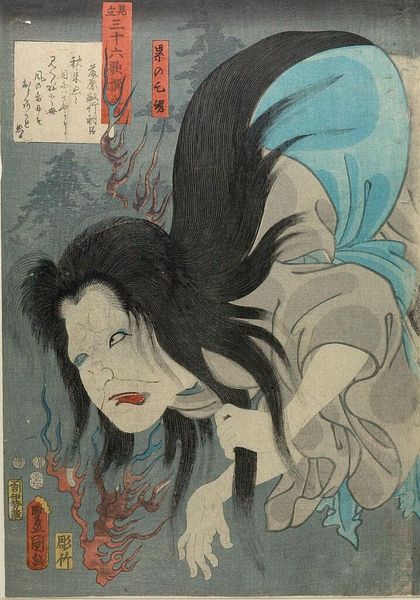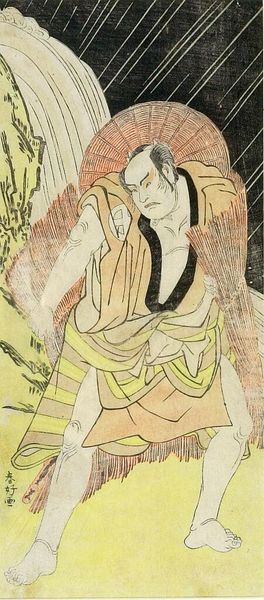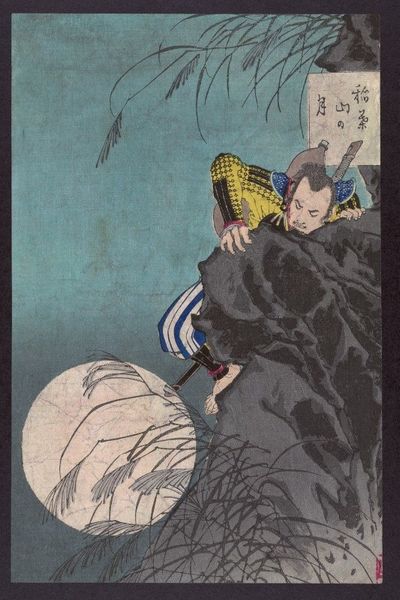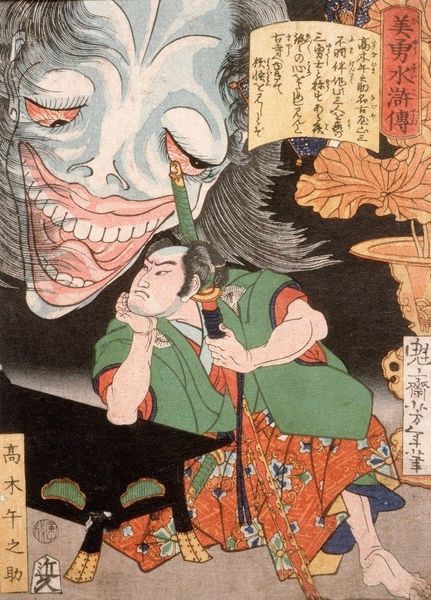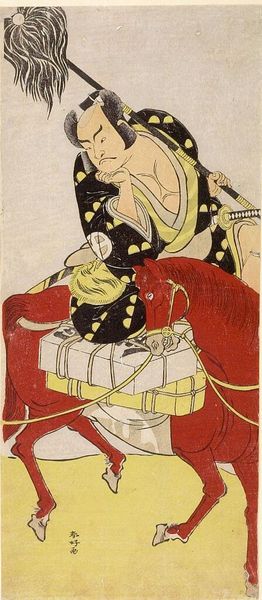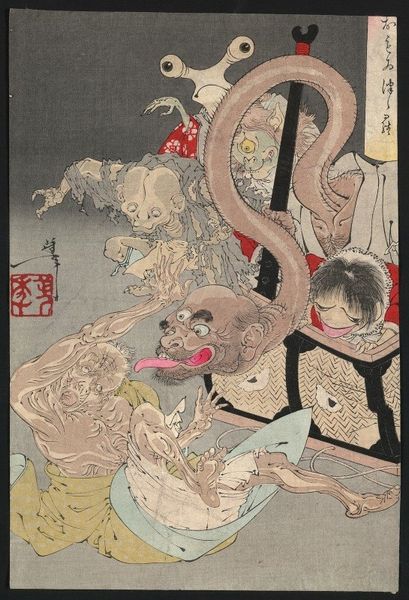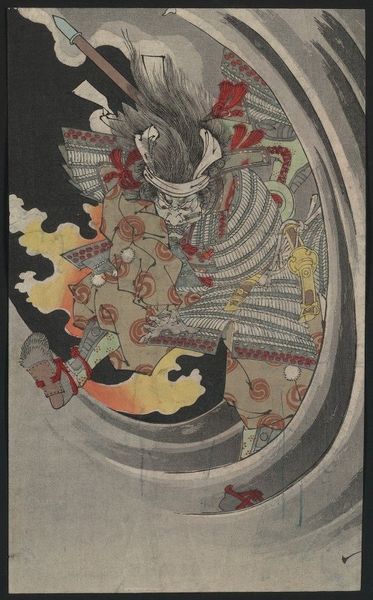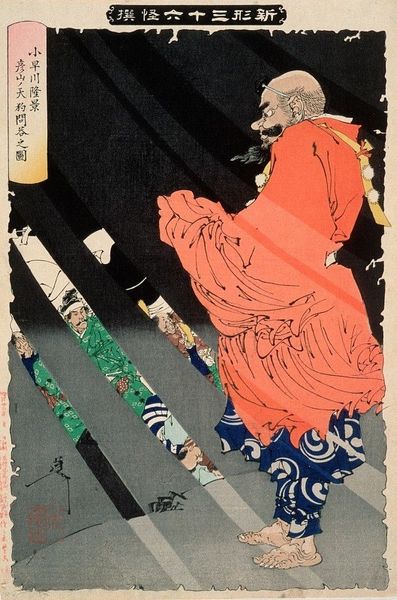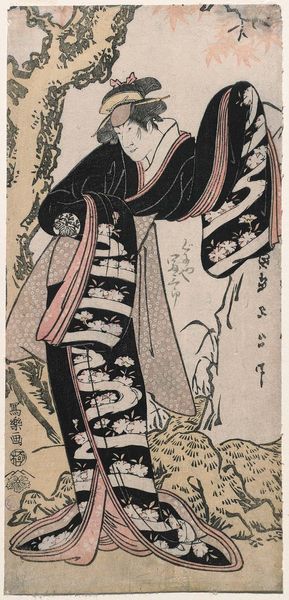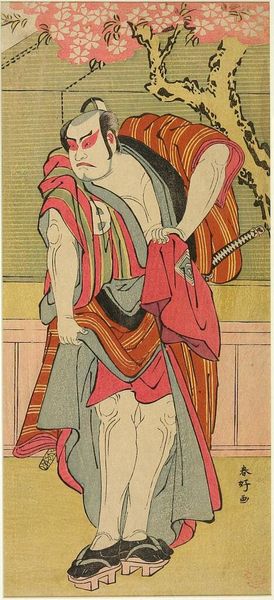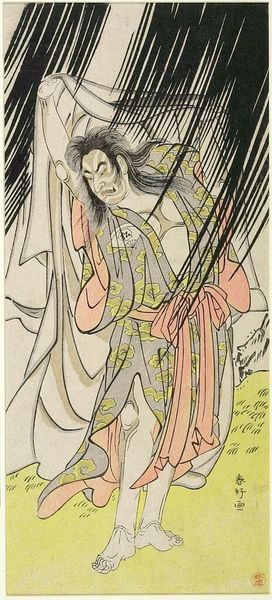
# print
#
asian-art
#
ukiyo-e
#
figuration
Copyright: Public domain
Curator: Ghoulish, isn't it? I'd describe it as unsettling yet strangely beautiful in its anatomical detail. Editor: Indeed, a spectral dance across the woodblock! What we are looking at is "Hyaku monogatari Kohada Koheiji", a print by Katsushika Hokusai. He's more widely known for his landscapes, like "The Great Wave", but here we see him explore the grotesque, working within the Ukiyo-e tradition. Curator: Let’s dissect its composition. We see an apparition—a skeletal figure suspended within this scarlet band, possibly a discarded sash. The flatness, a hallmark of the print medium, strangely enhances the dimensionality of the body, directing our sight towards its gaping eye sockets. The dark ground only reinforces the subject. Editor: Context is critical, though. Japanese ghost stories, or "kaidan," served as moral lessons often targeting the injustices of the era. It speaks to broader cultural anxieties, wouldn’t you agree? We also can’t look at this and ignore gender; spectral vengeance enacted upon wicked spouses—we have to read into Koheiji's presence as a call-out of patriarchal dominance and abusive relations. Curator: Ah, yes. But consider Hokusai’s deliberate application of color, especially the contrast between the pallid flesh and the crimson band. This generates an undeniable visual tension, playing with attraction and revulsion. The sash has its polka dots equally distanced as an ode to geometrical rigor. Editor: While formal analysis is undoubtedly valuable, reducing the image to mere geometry dismisses its potential as an accusation, doesn’t it? Can’t we suggest it operates on many levels? The ghostly hand clinging to the fabric seems to reflect a moment of profound loss, too. It can also symbolize precarity or dependence on exploitative social conditions, don’t you think? Curator: Perhaps both elements are intertwined; this emotional resonance arises directly from the graphic power that stems from line, color and shape, allowing for endless possibilities in the reception. The graphic power, I think, does wonders in a tale of spousal abuse and death. Editor: Undoubtedly, contemplating Hokusai’s Koheiji reminds us of the ever-evolving dynamics between formal construction and contextual interpretation in understanding the breadth of socio-historical anxieties expressed in Japanese art. Curator: I couldn’t agree more. It is always rewarding to explore the way structural elements, particularly their composition, influence the narratives and contexts around these iconic visuals.
Comments
No comments
Be the first to comment and join the conversation on the ultimate creative platform.
